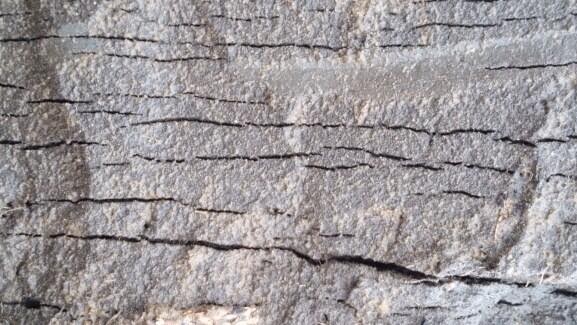Baseball season is back, the Jays are following the Leafs and I just struck chasing a high hard one. Back in February I posted how comfy the wheat crop would be under that big blanket of snow. Boy was I wrong. I have been fielding some questions about why I haven't made any comments about the poor state of the wheat crop on this blog. That is because I was waiting for the wheat crop to tell us more. I knew it was bad, but how bad? Windshield assessments can be extremely misleading. It is only when we get out and walk looking for new growth that we begin to get a feel for the crop's condition. Monday night, Brian got off the sprayer and quickly announced that half the wheat fields he just finished putting nitrogen on should be tore up. His exact words contained the word junk if my memory is accurate. He is young and prone to over reacting, but his assessment is pretty close to the truth.
What happened?
A month after my post in February, Rick DeBrabandere showed me some pictures from a ski trip across his wheat field during the 3rd week of March.
The dark areas in the middle are ice. Under the snow there was more ice.
A lot of ice.
An easy 6-8 inches of solid ice right on the bottom under the snow pack. Cannot remember seeing that before. There had been no thaw. This farm is not heavy land and it drains reasonably well. It is hard to describe the combination of events that lead to the ice buildup. It seems like the snow was melting slowly during the day, but before the water could get away, it was accumulating as ice under the snow cover. The thick layer of ice smothered the crop out. End of story.
Making the decision to take out a wheat crop is not easy. Most agronomists would advise against it because the future is so hard to predict. There is some comfort in the devil that you know vs the unknown. Some questions to ask yourself.
What is the rotation history on this farm?
What about future rotations? There is still a rotation benefit to keeping the wheat.
Do you have soybean cyst nematode?
What is your crop insurance yield guarantee?
Do you need straw?
Will you need a place to spread manure in August?
Was the plan to put in a cover crop after wheat to improve soil structure or provide additional feed?
If the plan is to keep a damaged field what can you do to make the most out of a tough situation?
- Treat it like a wheat crop. Don't give up. Put on a full rate of N and maybe a little more, control weeds, apply fungicides, do everything you can to make the good areas yield well. The crop still has to be managed and will respond to inputs.
- If you can work with the feed grain, plant barley in the thin spots and combine separately.
- Spread single cut clover to establish in the weak areas and help keep weeds in check.
- Come back with cover crops to improve soil structure.
If the decision is made to start over what is the best strategy?
- Spray glyphosate sooner than later. Two reasons. It makes the decision permanent and you want the wheat dead before the planter goes across the field. Wheat is hard to kill with tillage. If you disturb it and then spray it is also harder to kill. Where the wheat stand is healthy the soil will stay wet and gummy because of the sugars and resins that exude from the roots. This makes for variable seedbed conditions. Kill the wheat and let the roots start to decay as soon as possible. Even half a day can make a difference.
- If you choose to plant soybeans there is a 10% yield loss to 2nd year soybeans. If SCN is around the yield penalty could be higher.
- You should be able to no-till corn or beans without tillage. At the most one shallow tillage pass is enough for a seed bed.
- If corn is planted, account for the N already applied to the wheat.
- If soybeans are planted don't worry about nitrogen causing problems. The soybeans won't care, nodulation will still occur, the crop will survive and do well. An exception to this would be a field with a long history of white mold infection.
It has been said that a poor wheat crop will cause a headache in the spring. The headache will disappear in June when the crop looks much better, but the headache will return at harvest. The 2014 wheat crop will definitely be a source of headaches.

.jpg)
.jpg)
.jpg)



